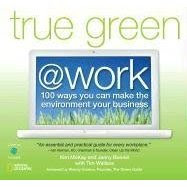Print lives!
Despite the fantastic uses of the internet as a source of knowledge, information, and connection, at some point most people will still pick up the occassional book, magazine, or newspaper.
But today I am not writing for those people. Instead, I am writing for those among us for whom buying a beautifully produced publication is a deliberate act. We are the type of people who really LOVE the look and feel – the smell, even! – of the printed page. And whether we are looking at a glossy fashion magazine or a limited-edition artist's monograph, we wonder what kind of paper was chosen, or how many colors were used in printing (was that a PMS or a tint match?). Who was the designer? Who shot those photos? We are excited when a publisher hits the market just right with a new idea – and we love when someone comes up with a unique and unexpected way to put the whole package together.
And as it turns out, we can take heart, at least for now: in 2007, according to
R.R. Bowker, 277,000 new trade titles and 135,000 on demand titles were published, an overall increase over the previous year.
Graphic Arts Monthly reports that among the largest print operations in the US there was an aggregate revenue leap of 12% in 2007, indicating an increase in printed publications. At least in general terms, there are more books and magazines being printed than ever before.
For two decades my professional life has been connected to the world of print through advertising, design, and publishing. Over the years, I’ve had the good fortune to work with some great companies and institutions – The Metropolitan Museum of Art, The Aperture Foundation, The Creative Black Book, the Italian publisher and printer Mondadori – where the translating of important images to the printed page is itself considered an art. I include among my friends and colleagues terrific artists, photographers and designers; top-notch editors, publishers and packagers of art books; tireless production managers; knowledgeable agents and sales people; and some of the best printers out there in the US, Asia, and Europe who specialize in serving this fussy group of people.
This blog is meant to serve as a forum for commentary and opinions – hopefully some other than my own! – on subjects related to the interconnected worlds of art, photography, advertising, design, printing and publishing.





